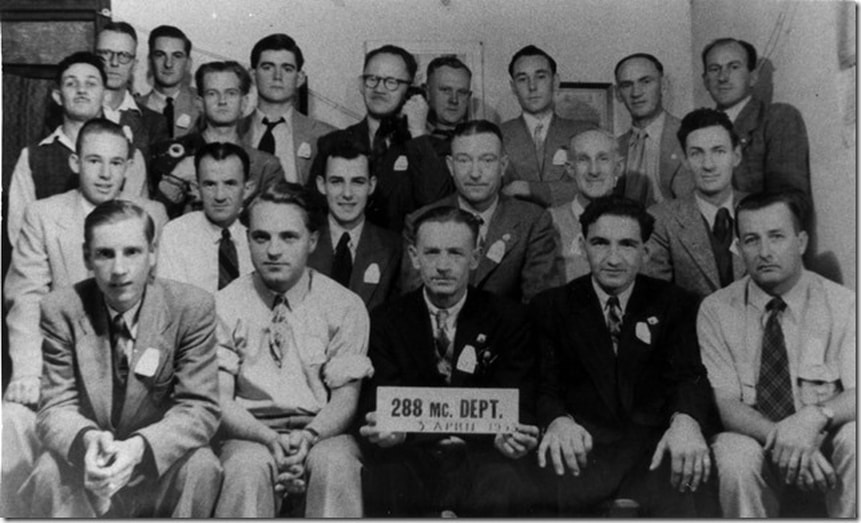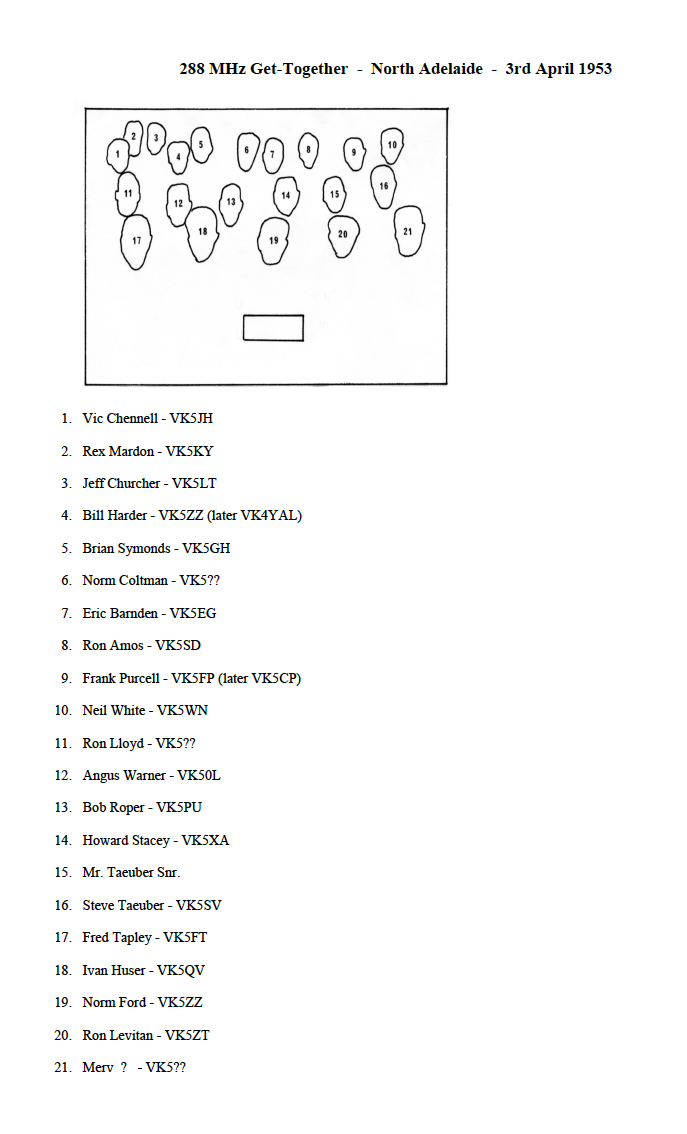- Home
- History
- Membership
-
Current (2024) Committee
- 2023 Committee
- 2022 Committee
- 2021 Committee
- 2020 Committee
- 2019 Committee
- 2018 Committee
- 2017 Committee
- 2016 Committee
- 2015 Committee
- 2014 Committee
- 2013 Commitee
- 2012 Committee
- 2011 Committee
- 2010 Commitee
- 2009 Committee
- 2008 Committee
- 2007 Committee
- 2006 Committee
- 2005 Committee
- 2004 Committee
- 2003 Committee
- 2002 Committee
- 2001 Committee
- 2000 Committee
- 1999 Committee
- 1998 Committee
- 1997 Committee
- 1996 Committee
- 1995 Committee
- 1994 Committee
- 1993 Committee
- 1992 Committee
- 1991 Committee
- 1990 Committee
- 1989 Committee
- 1988 Committee
- 1987 Committee
- 1986 Committee
- 1985 Committee
- 1984 Committee
- 1983 Committee
- Upcoming Events
- Latest info/news
- Archive of Past events
- Licences & examinations
- Kits
- The previous AHARS 'shack'
- VK5RAD Crafers repeater
- Central SA Repeater Network
- KIWI SDR - Ironstone Range
- Buy and Sell
- Policies & Reports
- Newsletters
- Members circulars
- NETS
- ILLW
- VK5 Parks Award
- Club Awards
- Out and About in VK5
- Members Introductions
- Life Members
- Silent Keys
- Articles, videos and files
- What is amateur radio?
- DX Code of Conduct
- Propagation
- QSL card checking
- QSL information
- Contact us
Ivan VK5QV.
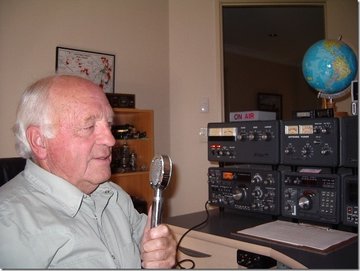
I first became interested in the technical side of radio at the ripe old age of four. Our domestic radio needed attention, and I can remember the chassis being up-ended on the kitchen table and a neighbour (who was probably a relation) prodding around among pretty coloured things about two inches long. It was the colour that caught my eye, and I made up my mind there and then, that, that was what I wanted to do when I grew up. I later found out the pretty coloured things were in fact (body-end-dot type) resistors - Hi!
In the early 1940s, Adelaide changed from a 210 Volt distribution system to a 240 Volt system, and somehow we missed out on getting the 240/210 Volt auto-transformer for the radio. Needless to say, the radio “spat the dummy” a short time later. The replacement was a Scharnberg Strauss console model, made and distributed in Adelaide by Ernest Smith & Co (later, trading as Ernsmiths).
This radio covered the short-wave bands as well as the broadcast band, and during the Second World War, I used to tune into the BBC and Radio Switzerland on a regular basis. One end of the short-wave dial was marked “40 Amateur”, and when my father explained to me what it meant, I was hooked.
Incidentally, the band-switch of this radio got a really good work-out and needed replacing after about 2 years, so I guess I did my first radio repair job at around the age of twelve. As I recall, the soldering iron was heated in a little coke oven, the flux was a block of resin and the solder a somewhat large stick of home-made 50/50 solder.
After leaving school, I started an apprenticeship as an electrical fitter with a major electrical engineering firm, mainly rewinding and servicing electric motors. During the third year of my apprenticeship (apprenticeships were 5 years in those days), I enrolled in a radio course at the old School of Mines and Industries - now the University of South Australia. Subjects included Radio Physics, Radio Receiving, Radio Transmission, Radio Calculations I & II and of course, Morse & Procedure.
In the early 1940s, Adelaide changed from a 210 Volt distribution system to a 240 Volt system, and somehow we missed out on getting the 240/210 Volt auto-transformer for the radio. Needless to say, the radio “spat the dummy” a short time later. The replacement was a Scharnberg Strauss console model, made and distributed in Adelaide by Ernest Smith & Co (later, trading as Ernsmiths).
This radio covered the short-wave bands as well as the broadcast band, and during the Second World War, I used to tune into the BBC and Radio Switzerland on a regular basis. One end of the short-wave dial was marked “40 Amateur”, and when my father explained to me what it meant, I was hooked.
Incidentally, the band-switch of this radio got a really good work-out and needed replacing after about 2 years, so I guess I did my first radio repair job at around the age of twelve. As I recall, the soldering iron was heated in a little coke oven, the flux was a block of resin and the solder a somewhat large stick of home-made 50/50 solder.
After leaving school, I started an apprenticeship as an electrical fitter with a major electrical engineering firm, mainly rewinding and servicing electric motors. During the third year of my apprenticeship (apprenticeships were 5 years in those days), I enrolled in a radio course at the old School of Mines and Industries - now the University of South Australia. Subjects included Radio Physics, Radio Receiving, Radio Transmission, Radio Calculations I & II and of course, Morse & Procedure.
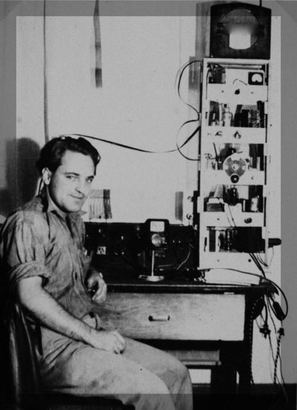
I sat for and passed my AOCP in 1952, and was subsequently issued Experimental Licence number 8845, and the callsign VK5QV. In those days of course, if one couldn't construct a receiver and transmitter, or modify war surplus equipment, then one just didn't get on the air.
My first station consisted of a super-regenerative receiver using an RL18 tube as the regenerative detector on the one-metre (288MHz) band. The transmitter was a pair of RL18srunning 3 Watts as a modulated oscillator. The transmitter was built inside an up-turned Kraft cheese box right up inside a 16 element phased array. Filament voltage and modulated high tension was fed from the shack. The microphone was a WW2 carbon microphone.
With virtually no feed-line, the transmitter put out an extremely good signal, being comparable with stations running as much as 50 Watts.
My first HF station consisted of a 6J5 xtal oscillator driving a 6V6 in class C with a dc input of 9 Watts on 40 metres. The receiver was a modified receiver from a WW2 101 set. There was no modulator at that stage, so initial communication was on Morse code. A single 6V6modulator was added later. The microphone was home-made using a commercially available crystal insert, and the antenna a modified Wind
My first station consisted of a super-regenerative receiver using an RL18 tube as the regenerative detector on the one-metre (288MHz) band. The transmitter was a pair of RL18srunning 3 Watts as a modulated oscillator. The transmitter was built inside an up-turned Kraft cheese box right up inside a 16 element phased array. Filament voltage and modulated high tension was fed from the shack. The microphone was a WW2 carbon microphone.
With virtually no feed-line, the transmitter put out an extremely good signal, being comparable with stations running as much as 50 Watts.
My first HF station consisted of a 6J5 xtal oscillator driving a 6V6 in class C with a dc input of 9 Watts on 40 metres. The receiver was a modified receiver from a WW2 101 set. There was no modulator at that stage, so initial communication was on Morse code. A single 6V6modulator was added later. The microphone was home-made using a commercially available crystal insert, and the antenna a modified Wind
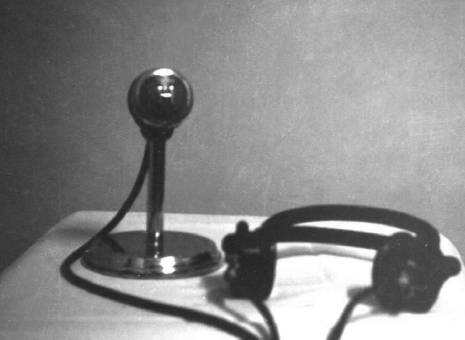
The Home-made Microphone c1950. The case was a sidelight from an Austin 'A' series ute. The body was sprayed crackle black, and the front section chrome plated. The stand was made from a piece of bathroom towel rail and an old pie tin which were also chrome plated. The crystal insert was an Acos Mic 19 which cost £2/15/0.The microphone lead was rubber sheathed microphone cable slightly larger in diameter than RG58 coax.
In 1955, I headed for the UK and beyond. One of the reasons for going to the UK was to get some experience with television before it's introduction into Australia in 1956 onwards. In those days, most travelled by ship(which took four to six weeks) as flying was far too expensive. The ship departed from Melbourne, and first day out I met a YL from Sydney,which as it turned out, put an end to my television plans.
While in the UK, I held the callsign G3KGH. I worked for a short time in Willesden Green(NW London), and managed to see as much of the UK as I could, and travelled some 12,000miles through Europe on a 350cc Matchless. But that's another story.
On my return to Adelaide, I worked for a time as a radio mechanic at Port Adelaide before heading to Sydney to get married. We decided to live in Sydney, and I took out the callsignVK2ATX. While looking for a suitable job, I decided to get my “broadcast ticket”. The exam consisted of an electrical paper, a radio paper, and a practical and oral test. With my back ground, I had no problems passing, and obtained my BOCP in 1959.
I never ever used the qualification though, as in the meantime, I had found work as a radio mechanic specializing in car radios. Then, one dark and stormy night (30-Sep-1968) a 104 foot gum tree came down and flattened our little house. It was either chop all the other trees down or move. So we moved back to Adelaide in January 1969, and I started as a Trade Teacher with what is now TAFE, at the then Kilkenny Technical College. I retired in 1991and in 2002, returned to Adelaide after spending 30 years in the country - 27 of them in Mount Gambier.
I consider myself lucky that I have been involved with radio in the period in history that Ihave - close enough to it's beginning to appreciate it, and long enough to see the technology evolve as it has. However, on reflection, I must say that radio and amateur radio in particular, ain't what she used to be! And I think in some ways, that's a great pity.
In 1955, I headed for the UK and beyond. One of the reasons for going to the UK was to get some experience with television before it's introduction into Australia in 1956 onwards. In those days, most travelled by ship(which took four to six weeks) as flying was far too expensive. The ship departed from Melbourne, and first day out I met a YL from Sydney,which as it turned out, put an end to my television plans.
While in the UK, I held the callsign G3KGH. I worked for a short time in Willesden Green(NW London), and managed to see as much of the UK as I could, and travelled some 12,000miles through Europe on a 350cc Matchless. But that's another story.
On my return to Adelaide, I worked for a time as a radio mechanic at Port Adelaide before heading to Sydney to get married. We decided to live in Sydney, and I took out the callsignVK2ATX. While looking for a suitable job, I decided to get my “broadcast ticket”. The exam consisted of an electrical paper, a radio paper, and a practical and oral test. With my back ground, I had no problems passing, and obtained my BOCP in 1959.
I never ever used the qualification though, as in the meantime, I had found work as a radio mechanic specializing in car radios. Then, one dark and stormy night (30-Sep-1968) a 104 foot gum tree came down and flattened our little house. It was either chop all the other trees down or move. So we moved back to Adelaide in January 1969, and I started as a Trade Teacher with what is now TAFE, at the then Kilkenny Technical College. I retired in 1991and in 2002, returned to Adelaide after spending 30 years in the country - 27 of them in Mount Gambier.
I consider myself lucky that I have been involved with radio in the period in history that Ihave - close enough to it's beginning to appreciate it, and long enough to see the technology evolve as it has. However, on reflection, I must say that radio and amateur radio in particular, ain't what she used to be! And I think in some ways, that's a great pity.
- Home
- History
- Membership
-
Current (2024) Committee
- 2023 Committee
- 2022 Committee
- 2021 Committee
- 2020 Committee
- 2019 Committee
- 2018 Committee
- 2017 Committee
- 2016 Committee
- 2015 Committee
- 2014 Committee
- 2013 Commitee
- 2012 Committee
- 2011 Committee
- 2010 Commitee
- 2009 Committee
- 2008 Committee
- 2007 Committee
- 2006 Committee
- 2005 Committee
- 2004 Committee
- 2003 Committee
- 2002 Committee
- 2001 Committee
- 2000 Committee
- 1999 Committee
- 1998 Committee
- 1997 Committee
- 1996 Committee
- 1995 Committee
- 1994 Committee
- 1993 Committee
- 1992 Committee
- 1991 Committee
- 1990 Committee
- 1989 Committee
- 1988 Committee
- 1987 Committee
- 1986 Committee
- 1985 Committee
- 1984 Committee
- 1983 Committee
- Upcoming Events
- Latest info/news
- Archive of Past events
- Licences & examinations
- Kits
- The previous AHARS 'shack'
- VK5RAD Crafers repeater
- Central SA Repeater Network
- KIWI SDR - Ironstone Range
- Buy and Sell
- Policies & Reports
- Newsletters
- Members circulars
- NETS
- ILLW
- VK5 Parks Award
- Club Awards
- Out and About in VK5
- Members Introductions
- Life Members
- Silent Keys
- Articles, videos and files
- What is amateur radio?
- DX Code of Conduct
- Propagation
- QSL card checking
- QSL information
- Contact us
